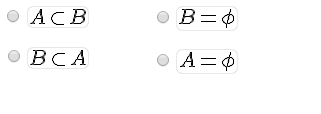If #A# and #B# are two events such that #P(A)ne0# and #P(B|A)=1#, then?

1 Answer
Sep 27, 2017
#B subset A#
Explanation:
Using the conditional probability formula:
# P( X | Y ) = ( P (X nn Y) ) / ( P(Y) ) #
We have:
# P( B | A ) = 1 => ( P (B nn A) ) / ( P(A) ) = 1#
And therefore:
# P (B nn A) = P(A) #
If we now think about the underlying set theory then clearly:
# {B nn A} = {A} #
As
#B subset A#

